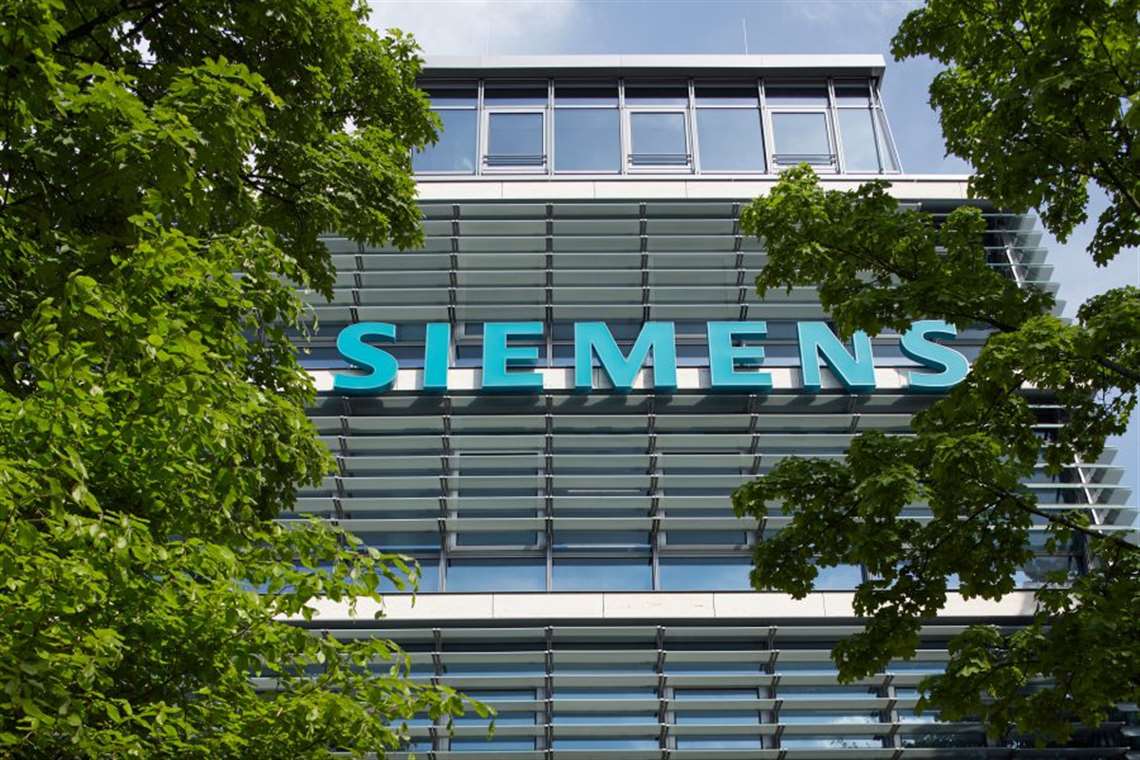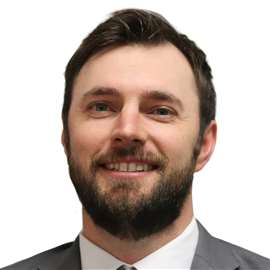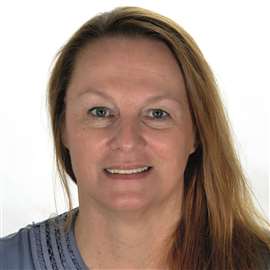New Siemens Energy Company Will Be ‘Powerhouse’ In Market
22 April 2020


(Editor’s note: This Q&A first appeared in the Spring issue of Diesel & Gas Turbine Worldwide magazine.)
Facing unprecedented changes in the power generation market, Siemens last year unveiled a plan to divest itself of most of its power and gas portfolio. The new, independent energy company will be known as Siemens Energy and include oil and gas solutions, gas and steam turbines and on-and offshore wind turbines in its portfolio.
Tim Holt, chief operating officer at Siemens Gas and Power, agreed to a Q & A session with Diesel & Gas Turbine Worldwide to discuss the new company’s future, the state of the industry and other topics. Shortly before the magazine’s deadline, Siemens named Christian Bruch as the CEO of Siemens Energy, effective May 1.
Q: This is obviously a time of transition for Siemens Power as a company; what is the message that you’re sharing with customers and potential customers about what comes next?
A: Siemens AG will spin off its Gas and Power Operating Company into an independent, stock-listed energy company that will enable the company to compete more effectively in today’s challenging market. The new stock-listed energy company is called Siemens Energy. As part of our portfolio offerings, we will take over Siemens’ majority stake in the market-leading wind power business, Siemens Gamesa Renewable Energy. These actions will create a truly unique and focused energy pure-play company on the market – and one that will play a leading role in both the conventional and the renewable energy worlds. With the combination of conventional power generation, renewables, oil and gas activities, and power transmission, we’re building an attractive and focused company with a unique capacity in the industry. With about 90 000 employees and a business volume of about €30 billion, the new company will be a real powerhouse in the energy and power generation market.
Delivering the best solutions for the benefit of our customers and society has always been at the core or our business values – and that won’t change. In fact, our new structure will allow us to further consolidate our position as a company that addresses the needs of customers across the entire energy value chain.
As Siemens Energy, we will offer the following benefits to our customers:
- Reduced complexity will enable a sharper focus on addressing our customers’ unique needs; it’ll also help us act faster and use our resources to drive flawless execution
- An experienced and accountable management team committed to creating our future in a way that benefits our customers most
- Unleashed entrepreneurial thinking and action that combines the strength and breadth of our portfolio to develop unconventional solutions for the industry’s most pressing challenges
- Strategic investments in R&D, innovation, and new growth fields that deliver benchmark performance
Q: As Gas and Power is reaching into differing market segments – Gas being both power generation and gas compression – how do you assess both of those specific market segments in 2020 and beyond?
A: The market dynamics of the gas business as part of the oil and gas versus the power generation business are different. We see continued strong growth in gas as a fuel, not just for power generation, but increasingly for heating and industrial demand. This increased gas demand also triggers a growing demand for compression equipment.
On the power generation side, we see the market continue to soften due to the lack of economic viability of new combined cycle power plant projects in most parts of the world. Oil and Gas is the exception in some cases since we are seeing more and more power applications that rely on e-LNG. A great example of this is our GNA 1 project in Brazil. When completed, the project will supply four million people with affordable and clean energy.
In the longer term, we see the outlook improving for power generation companies, once they need to guarantee the security of supply in an energy system that’s largely dominated by intermittent renewable power. A trend we are also seeing is the rising global demand for distributed power generation and a shift from reliance on larger turbines to more flexible solutions. We see this in the increased demand for our global SGT-800 gas turbines, which are known for their flexibility and reliability and for which we have more than 300 installations.
Q: What does the talk of a “global gas glut” do to a company like Siemens? Is it likely to hinder the application of your power equipment?
A: Investing in the gas supply – for example, liquefied natural gas – is a long-term business. Right now there’s plenty of supply, but demand is being driven from multiple sides and might further increase—in terms of heating and industrial applications—displacing the oil- and coal-fired supply, and on the power generation side, in the shift from coal to gas. We also see a large number of gas grid operators are currently upgrading their pipeline grids to prepare for the future use of hydrogen as a carbon-neutral gas that will be blended with natural gas.
Q: Speaking of gas, for a number of years, natural gas was touted—even by the environmental groups—as the “green” choice. More recently however, we read about municipalities seeking to ban the use of gas within their boundaries and gas has appeared to lose its green luster with many environmentalists. Is it realistic to want to get rid of natural gas as rapidly as some appear to want and go strictly to renewables?
A: First, we need to keep in mind that decarbonization must be balanced with energy security and affordability for consumers. It’s true that methane has become more and more aggregated in the atmosphere with a 30 times higher global warming potential (GWP) than CO2, and 17% of the total global greenhouse gas emissions are methane emissions, of which 12% come from the oil and gas sector: They’re mainly from oil and gas upstream and from gas downstream. The entire industry has taken action and is committed to fixing leaks and upgrading their technologies. These measures can help avoid most emissions.
Comparing gas power generation with coal power generation, gas power plants still emit 50% less greenhouse gas than coal-fired power plants. Gas turbines also contribute to the security of supply even in a vastly decarbonized energy system, as well as being a sustainable investment in the future energy system because they can operate using natural gas today and using green gases like hydrogen and synthetic methane in the future. Today Siemens gas turbines can already operate on a wide range of hydrogen fuels. We’re committed to working together with our customers to drive innovations in greener power. We recently signed a collaboration agreement with one of our customers in Sweden to test a state-of-the-art gas turbine technology that enables the use of renewable fuels in a combined heat and power (CHP) plant that’s currently powered by natural gas.
Q: Siemens has been very active in promoting additive manufacturing, including a recent collaboration with ASME for training services. How do you see additive manufacturing changing the industry in the coming years?
A: Additive manufacturing (AM) has been a huge driver of innovation across many industries. In the past few years, we’ve been able to acquire a lot of practical expertise in this field. Today we’re using the technology for rapid prototyping and solving complex customer challenges across different industries, thanks to high-end production parts. In power generation, the serial production of additively manufactured components for industrial power generation is already underway and offers new possibilities for the manufacture of gas turbines.
In 2017 we designed and printed the world’s first gas turbine blades that underwent successful testing under full-load conditions. Since then, we’ve advanced to where we can produce highly precise solutions using high-performance design and materials. Gas turbine burner nozzles and combustion swirlers as well as repairs to burner heads are already being produced in our factory in Finspång. Over time we’ll be able produce far more competitively in terms of lead time, development time, product performance and lifecycle costs. The same applies to our customers, who no longer will have to spend a fortune to build up a vast inventory of every component for every machine; instead, they’ll just order spare parts on demand, even parts for gas and steam turbines. One example is Philippsthal in Germany where we installed the world’s first 3D printed burner in a SGT-700 gas turbine in Summer 2017. Since then 3D printed burners accumulated about 17000 operating hours.
Establishing and extending our global AM network will help the technology thrive. It’s vital to us to develop strong partnerships like the ASME collaboration on the development of AM trainings. By bringing different mindsets together, great opportunities can emerge that would otherwise never happen, and active engagement with other companies can greatly speed the pace of development and innovation. In the case of the aerospace industry, for example, we have the advantage of having similar materials and very similar requirements in the power generation industry. That’s why we’re trying to accelerate the adoption of AM through cross-industry collaborations and drive the industrialization of the technology into commercial products as quickly as possible by designing new processes, developing the best materials, producing better components, and then industrializing them to scale. Our power generation business will see great benefits from these synergies across different industries.
Q: The trend toward digitalization in power generation is increasing in speed, but with digitalization comes different kinds of security risks. How is Siemens Gas and Power navigating that challenge?
A: Digitalization certainly offers great opportunities. By leveraging big data, advanced analytics, and cloud computing, utilities worldwide are increasingly aiming to reduce emissions, improve their efficiency, and reduce costs. It’s no surprise that utilities keep pushing the bounds of information technology and are increasingly adopting business models that connect operational technologies in power generation, transmission, and distribution assets to information technology systems.
With our Omnivise Fleet Management solutions, we offer a modular suite of applications that can be rolled out into pre-existing power generation infrastructures. It provides valuable information in the form of asset diagnostics, performance monitoring or optimized operations which allow for an efficiency increase by up to four percent and a decrease in maintenance costs by up to 10 percent.
Adding more digitalization to the energy system also means that we have to face evolving cybersecurity challenges. Cybersecurity is an essential component of our vision for digitalization and a safer grid.
A recently released cybersecurity report by Siemens and the Ponemon Institute explored the vulnerability of critical infrastructure to cyberattacks, finding that cyber threats on the operational technologies of utilities worldwide are growing more severe and sophisticated. Sixty-four percent of those surveyed in the utility industry say that sophisticated attacks are a top challenge, and 54 percent expect an attack on critical infrastructure in the next 12 months. We need to take these results very seriously.
To increase capability to detect and respond to threats, you need to navigate the complex relationship between information technology and operational technology environments. Plant security monitoring, vulnerability management, and cyber asset management are all essential components of effective cybersecurity. Over the past few years we’ve expanded our cybersecurity ecosystem by establishing a series of strategic collaborations with selected partners like PAS Global, TÜV SÜD, and Chronicle to provide end-to-end navigation and management across our customers’ entire cyber journey.
STAY CONNECTED




Receive the information you need when you need it through our world-leading magazines, newsletters and daily briefings.
POWER SOURCING GUIDE
The trusted reference and buyer’s guide for 83 years
The original “desktop search engine,” guiding nearly 10,000 users in more than 90 countries it is the primary reference for specifications and details on all the components that go into engine systems.
Visit Now
CONNECT WITH THE TEAM








